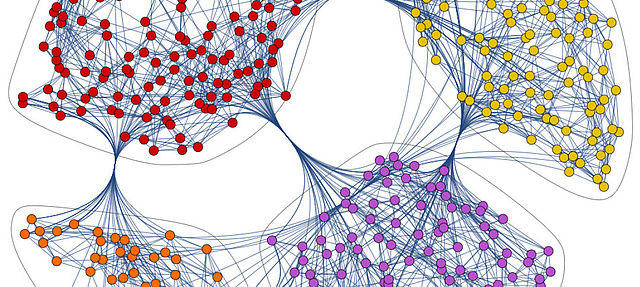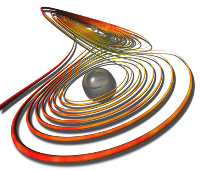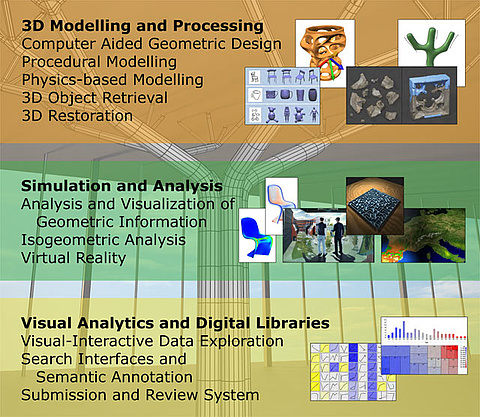Selected Topics of Visual Computing: AI & Geometry

Content
The topic of the lecture on Selected Topics in Computer Graphics in SS2024 is:
AI & Geometry
In this lecture, we will teach how to apply AI to 3D geometry and leverage geometric insights to tackle challenges in various domains such as computer graphics, and CAD. Through a combination of theoretical explanations, practical demonstrations, and hands-on exercises, students will learn how AI techniques can be effectively applied to analyze, process, and interpret 3D geometric data.
Specifically, we will cover topics including:
3D Geometric Representations: Exploring different representations of 3D geometry, including point clouds, meshes, voxels, and surface representations. Students will learn how to preprocess and encode 3D geometric data for input into AI algorithms.
3D Reconstruction, Shape Analysis and Retrieval: Discussing methods for 3D reconstruction from 2D images or point clouds. We will be investigating algoriths for 3D shape analysis, retrieval or comparison.
Selected Topics of Visual Computing
Selected Topics of Visual Computing (Computer Graphics) (3 VU = 1,5 VO + 1,5 KU)
Each year the lecture (VO) part comprises a series of lectures on current topics in 3D Modeling and Processing, Simulation and Shape Analysis, Visual-Interactive Data Analysis, and Digital Library Technologies. The lectures are given by members of the CGV institute and guest presenters, and followed by a written or oral exam.
The exercise part (KU), offers the students practical assignments in topics presented in the lecture part. The exercises are being worked on individually or in a team of students throughout the semester advised by members of the institute. A final presentation and short report on assignment results is the basis for grading the U part.
The V and U parts can be taken together or independently of each other. The AKCG lecture and exercise is open for all master and doctoral students interested in the above topics. Previous knowledge in Computer Graphics, Visualization and/or Interactive Systems as well as practical programming skills in a current programming environment is recommended for successful participation.
Photo credits:
Image from https://www.imperial.ac.uk/events/135182/london-geometry-and-machine-learning-summer-school/
3D Modelling and Processing: © S. Yoon, M. Scherer, T. Schreck, and A. Kuijper. Sketch-based 3D model retrieval using diffusion tensor fields of suggestive contours. In ACM Multimedia, pages 193-200. ACM, 2010. // © A. Andreadis, R. Gregor, I. Sipiran, P. Mavridis, G. Papaioannou, and T. Schreck. Fractured 3D object restoration and completion. ACM SIGGRAPH Posters, 2015. // © TU Graz / S. Havemann. Simulation and Analysis: © Riffnaller-Schiefer, Andreas; Augsdörfer, Ursula H.; Fellner, Dieter W.: Isogeometric Analysis for Modelling and Design. Eurographics 2015 Short Paper. // © TU Graz / Marcel Lancelle // © MRT Project, TU Braunschweig // © Andreas Halm. Visual Analytics and Digital Libraries: © T. Schreck, T. Tekusova, J. Kohlhammer, and D. Fellner. Trajectory-based visual analysis of large Financial time series data. ACM SIGKDD Explorations, Special Issue on Visual Analytics, 9:30-37, 2007. // M. Behrisch, J. Davey, S. Simon, T. Schreck, D. Keim, and J. Kohlhammer. // Visual comparison of orderings and rankings. In Proc. EuroVis Workshop on Visual Analytics, pages 7-11, 2013. // N. Silva, L. Shao, T. Schreck, E. Eggeling, and D. Fellner. Sense.me - open source framework for the exploration and visualization of eye tracking data. In Proc. IEEE Conference on Information Visualization.

